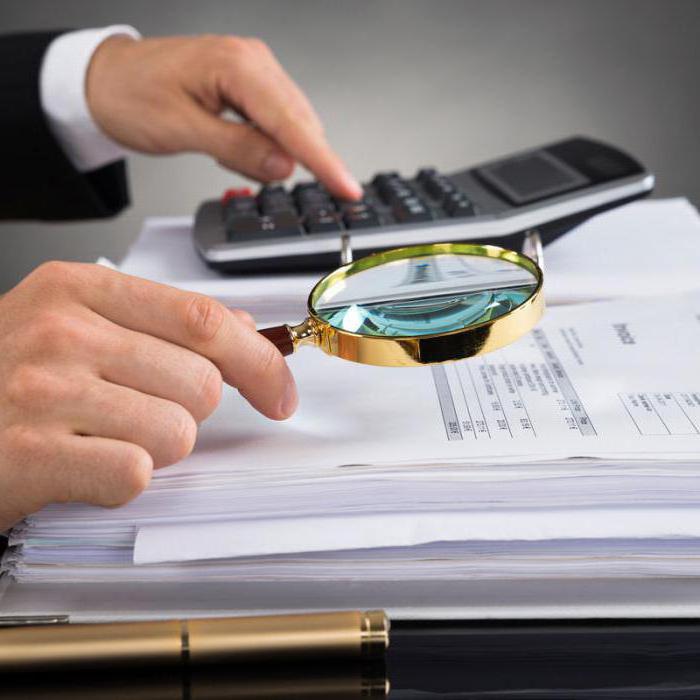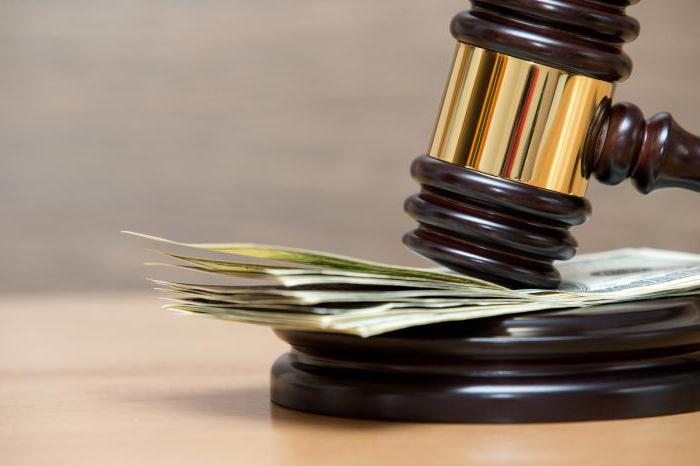One of the main payments in the Russian tax system is value added tax (VAT). The calculation procedure and methods for optimizing VAT are problems that many businessmen, accountants and tax specialists have to solve. And here it is extremely important not to overdo it, otherwise one may be suspected of striving for unjustified tax benefit. And this is a direct path to penalties.

Tax benefit is not an end in itself
Each transaction, like every businessman’s decision, should have a specific business goal. But reduction of the tax burden per se cannot be the goal of the operation. Just recently, a new article 54.1 was included in the Tax Code of the Russian Federation. Among other things, it determines the conditions for reducing the tax base, and one of them is the presence of the main purpose of the transaction, not related to tax cuts. This is the general approach to tax optimization. It is important to understand it in order to competently motivate your actions in the event of a dispute with the tax service.
For example, a business is being split up to apply special tax regimes. Instead of one large store, a businessman opens several small ones nearby, each of which falls under the UTII. Often even in one shopping center. Thus, he gets rid of VAT and other basic taxes. The Federal Tax Service may think that the owner has started all this for tax benefits, because such a division of the company does not give any other benefits. Another thing is if small retail outlets will be located, say, in different parts of the city or even in different settlements. Then this can be motivated at least by the fact that the businessman wants to cover new sales territories and different categories of customers.
Such questions will not arise if you know how to reduce VAT using exclusively white methods.
Input tax deduction
VAT is an indirect tax, that is, in the end it is paid at the expense of the end customer. A company that is a VAT payer has the right to deduct the amount of tax that suppliers presented to it for acquired values, for example, for materials. There are several conditions for applying a deduction:
the sale of goods that will be produced using these materials must be subject to VAT;
the supplier must issue an invoice to the company where VAT is allocated in the cost of materials;
materials should be taken into account, but not more than three years ago.
This is the simplest mechanism for reducing the amount of VAT, which is successfully used by many companies. But it is important to ensure that the above conditions are met.

VAT exemption
Not every taxpayer knows, but Article 145 of the Tax Code provides for a completely legal way to be exempt from VAT. This benefit applies to those companies that have earned no more than 2 million rubles in sales over the past 3 calendar months in a row. The exemption does not apply to importers and sellers of excisable goods. To apply this benefit, it is enough to file a notification with the tax authority and documents confirming the right to it.
However, there is one thing: contractors of the company will not be able to draw up a VAT tax deduction. That is, for those buyers who are themselves the payer of this tax, work with the company will not be so profitable. As a result, they either refuse to cooperate or demand a discount. Here, in each case, you will have to calculate in advance what is more profitable - to work without VAT at a discount or still pay tax.
The second minus is related to the size of revenue - its maximum threshold is limited by law. If you cross it, then the right to apply tax exemption will be lost.

Application of reduced and zero tax rates
Those who are considering how to reduce VAT will find it useful to read article 164 of the Tax Code of the Russian Federation. It lists goods and services that are taxed not at the standard rate of 18%, but at a preferential rate. For example, at a rate of 0% VAT, the sale of goods for export and international transport is taxed. The rate of 10% applies to the sale of most food products, including meat, dairy products, flour, bakery products, cereals, vegetables. In addition, the sale of children's goods, medicines and medical products falls under the same rate. As you can see, the choice of preferential goods is quite large.
Work on the "simplified"
Another option for working without VAT is the use of a simplified tax system (STS). When you switch to it, the need to charge and pay VAT will disappear completely. You can notify the Federal Tax Service Inspectorate about the use of “simplified” from the beginning of the next year by submitting a corresponding application in advance.
At the same time, there is a risk of losing some of the buyers who do not want to work with a VAT evader due to the impossibility of filing a tax deduction. But as practice shows, such counterparties may be interested in a good discount. As a result, it is still more profitable than paying VAT and income tax.

The downside is the following: in order to switch to the simplified tax system, the company must meet certain criteria. For example, no more than 100 people should work in it, and the amount of revenue for three quarters of the current year should not exceed 112 million rubles. There are a number of restrictions - all of them are listed in paragraph 3 of Article 346.12 of the Tax Code. As you can see, this optimization of VAT is also not a panacea.
When the company is too big
If the company "does not fit" in the simplified tax system, there are much fewer legal levers. Alternatively, you can register in addition a new company that will use the "simplified". And with those contractors who themselves are not VAT payers, work through it. Or the company is divided into several small parts so that each of them meets the requirements of the simplified tax system. Between these new organizations the whole business is distributed.
However, one should not forget about the need to have a business goal and carefully consider the motive for such a separation.
Work under agency contracts
There are still schemes based on agent relationships, and here is one of them. The company and the intermediary created by it on the USN conclude a commission agreement. The principal (intermediary) purchases the goods from the supplier and transfers them to the commission of the main company (commission agent). For this, the principal pays the commission agent a small fee. The optimization of taxation is as follows: since the intermediary uses the simplified tax system, he does not pay VAT on purchased goods. The main organization in this case will have to pay tax only on the size of its remuneration, but it is small.

In practice, many companies operate under agent contracts very successfully. Nevertheless, it is risky to definitely recommend such methods, since the tax service is very suspicious of transactions of interdependent companies.
How to reduce VAT payable: reorganization scheme
The methods that we described above are practiced with some degree of success in the current activities of organizations. But it happens that you need to save on VAT one-time, for example, when transferring expensive property. In most cases, such an operation will be considered a sale, even if the property is transferred free of charge. And if there is a sale, you should charge VAT.
A common method of avoiding this is to reorganize in the form of an allocation.Company B stands out from company A, which is located on the main taxation system, and it will use the simplified tax system. Under the law, company B is the assignee of company A in the reorganization. If company A transfers any property to Company B, this will not be considered a sale. Accordingly, there will be no tax base. Pure VAT optimization! But there is a fly in the ointment - the process of reorganization in itself is quite laborious and lengthy.

Partnership
A simple partnership is a form of cooperation between organizations temporarily united to achieve a specific goal. It is not required to register with the Federal Tax Service - the comrades simply conclude an agreement on joint activities between themselves. At the same time, they invest property, money, knowledge, reputation in the common cause - who has what. How to evaluate contributions, the comrades themselves also decide.
Here is an example of how to reduce VAT without breaking the law. Firm A and firm B formed a simple partnership and contributed: firm A with property, and firm B with money. By default, it is considered that deposits are equivalent and are the common property of partners. After a certain time, the participants realized that they had achieved their goal, and decided to stop cooperation. It's time to take your deposits - this is where the exchange takes place. Firm A takes the money, and Firm B takes the property. The transfer took place, but the object of taxation did not arise - such an operation is not legally considered an implementation and is not subject to VAT.
In theory, this is an ideal scheme to reduce VAT. How this works in practice is entirely up to implementation. First, you need to have a well-thought-out goal of creating a partnership. Secondly, you should not close it too quickly - it will hand over the participants “headlong”. Thirdly, it is worth preparing for the fact that claims from tax authorities may have to be defended in court. In arbitration practice, there are cases decided in favor of the participants in the partnership, so with a competent approach, the chances of success are high.
Prepaid camouflage schemes
Prepayments for future deliveries are subject to VAT in the same way as payments for property or goods. But it’s a completely different matter if the seller receives the same amount from the buyer in a different capacity. This is the basis for the optimization of VAT using bills, loans, deposits. The essence of all schemes is approximately the same with small nuances. First, the buyer transfers the advance payment to the seller, which is disguised, for example, as a loan of money, and the seller transfers the property to the buyer. After that, the parties have mutual demands: the seller receives the right to demand a fee from the buyer for the property, and the buyer from the seller - return the loan. The parties are settled by offsetting counterclaims, and no VAT object arises.
Let's not hide: these schemes are well known to tax authorities. And therefore, the success of the event will depend on whether the inspectors can prove that the deal on the transfer of the loan, bill, deposit was feigned.

Forfeit as part of the value
Another common scheme is based on the application of penalties. The contract includes the condition that, in violation of certain of its provisions, the buyer pays the seller a penalty. This may be, for example, a term for transferring funds. In this case, the price of the transaction object is set deliberately lower than the real one. The buyer, of course, “violates” the terms of the contract and pays a penalty. As a result, the seller receives the full value of the property, which is the sum of the amount specified in the contract and the amount of the penalty. Penalties are not subject to VAT, and this allows the seller to save part of the tax. The risks are the same as in the previous schemes - they are not news to the Federal Tax Service.
In conclusion, I want to say that there are at least a hundred ways to avoid paying VAT. And many of them are at least gray, and even completely black.So when deciding how to reduce VAT, you should not agree to any schemes proposed by tax optimization specialists. After all, you have to be responsible for this!